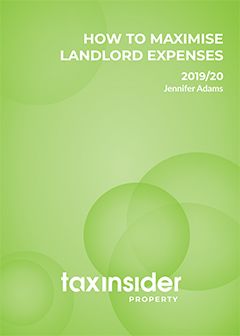The below excerpt is taken from our popular property report How to Maximise Landlord Expenses.
Property owners become landlords for a variety of reasons but one thing that they all have in common is the desire to maximise rental income profits and/or capital growth from their property investment. A common mistake is to think that the only way that this can be achieved is by increasing the rent to as high a level as the market can take but this might not be practical, depending on a variety of reasons.
3.1 Commonly Overlooked Claimable Expenses
The following expenses are not listed but are to be found in separate sections of the Property Income Manual and as such, they are commonly overlooked by landlords. It may also not be appreciated that there are different methods of calculation in relation to these expenses. These alternative methods of calculation can increase the amount deductible and hence increase the profit.
-
use of home as an office (see section 3.2 for detail)
-
home office costs, such as claiming Capital Allowances on office furniture, computers, printers (see Chapters 6 and 7 for detail)
-
direct costs such as stationery, apportionment of mobile/landline telephone and Internet costs to reflect business use.
3.2 Use Of Home As Office
There are different methods of calculating this expense, which is supposed to cover the additional costs incurred of electricity, gas, water rates that would probably be incurred in running the business from home.
Practical point
The calculations for this claim are not shown in HMRC's Property Income Manual or on the HMRC web pages; neither is it covered in HMRC's Property webinar because it is an expense in relation to the renting by a trading business. As property renting is a business then these expenses are claimable against rental income. The detail can be found in the Business Income Manual.
Method 1
This method is more widely known of the two. It is known as the Flat rate/fixed rate claim and is calculated depending on the set amount per hour that the landlord works on his/her business per month.
The standard amounts are as follows:
|
No of hours worked per month |
Amount per month |
Annual claim (full year) |
|
25 to 50 |
£10 |
£120 |
|
51 to 100 |
£18 |
£216 |
|
101 + |
£26 |
£312 |
Method 2
This method is a more precise method of calculation and may result in a higher amount of expense to claim. The calculation is still based on the number of hours spent on the business but this time also on the proportion of costs used in relation to the number of rooms used in the business.
To get the full scoop and more tips, purchase the full report here:




